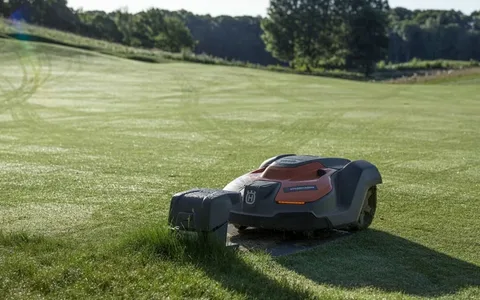The year 2025 marks a major leap forward in smart home technology, and robotic lawn mower are no exception. Once seen as luxury gadgets, these devices are now becoming a common sight in neighborhoods around the world. With AI improvements, better sensors, and increased efficiency, robotic lawn mowers in 2025 are smarter, safer, and more capable than ever before.
A Smarter Mow: AI and Machine Learning Integration
One of the biggest developments in robotic lawn mowers in 2025 is the integration of advanced artificial intelligence. Today’s models no longer follow simple, random mowing patterns. Instead, they use real-time data and machine learning to create efficient mowing routes, adapt to changing grass conditions, and even avoid high-traffic areas at certain times of the day.
Many of these mowers now include object recognition, allowing them to identify and avoid toys, pets, and garden decorations without missing a beat. Some premium models are even capable of learning the layout of your yard in a few runs, adjusting to seasonal changes and weekly schedules.
Wireless Freedom: No More Boundary Wires
One of the biggest complaints about early robotic mowers was the need to install boundary wires. In 2025, that’s becoming a thing of the past. Thanks to GPS-based navigation and virtual mapping, newer models offer wireless setup options. Homeowners can now define mowing zones via smartphone apps, set mowing schedules remotely, and even integrate their robotic mower with other smart home systems.
This innovation not only makes setup easier but also allows more precise lawn care. For example, if a section of your lawn needs more frequent mowing, you can now adjust settings without physically moving anything.
Sustainable and Eco-Friendly Technology
Robotic lawn mowers in 2025 also reflect growing concerns about sustainability. Most models run entirely on rechargeable batteries, using solar panels or efficient lithium-ion cells. Noise pollution is significantly reduced compared to traditional gas-powered mowers, and emissions are virtually zero.
Some manufacturers are introducing mowers made with recycled materials or biodegradable components, pushing the eco-friendly narrative even further. Smart energy use—such as charging during off-peak electricity hours—also makes these devices more efficient in terms of overall energy consumption.
What’s Next for Robotic Lawn Mowers?
Looking ahead, the next frontier for robotic lawn mowers in 2025 includes swarm mowing, where multiple smaller mowers work together to cover large properties. Integration with weather prediction apps could allow them to avoid rain or adjust cutting schedules based on upcoming weather conditions.
We may also see further development in voice assistant integration, allowing users to control their mower via Alexa, Google Assistant, or Siri. Combined with increased affordability, this will likely make robotic mowing a mainstream choice for homeowners worldwide.
Final Thoughts
The evolution of robotic lawn mowers in 2025 highlights how far smart home technology has come. With smarter navigation, wireless setup, sustainable designs, and AI-driven capabilities, these devices are not only making lawn care easier—they’re revolutionizing it. Whether you’re a tech enthusiast or just someone looking to cut back on yard work, now is a great time to explore what robotic mowing has to offer.



